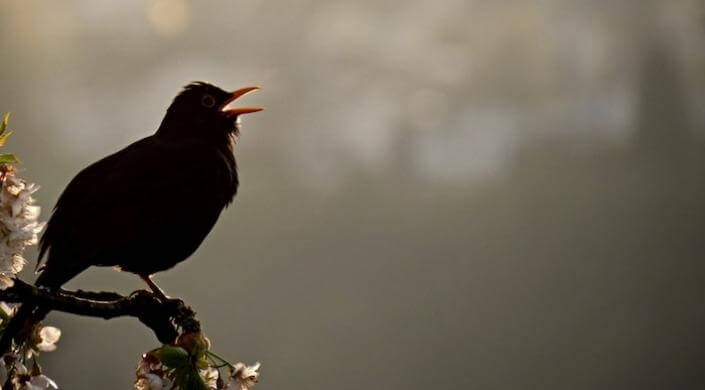News
A new study finds that the inherent complexity in birdsongs might actually be the result of a simple controllable instability in the structure of the specialized organ used to create song.
Researchers at the Harvard John A. Paulson School of Engineering and Applied Sciences have developed a simple device that mimics complex birdsongs. The device, developed by the group of L. Mahadevan, the Lola England de Valpine Professor of Applied Mathematics, of Organismic and Evolutionary Biology, and of Physics, uses air blown through a stretched rubber tube to recreate birdsongs found in nature, including the songs of zebra and Bengalese finches.

A close-up of the solitary wave as it moves through the tube, imaged by placing a mirror to show the mouth of the tube. Following a refractory period, the process repeats itself.
The study finds that the inherent complexity in birdsongs might actually be the result of a simple controllable instability in the structure of the specialized organ used to create song, known as a syrinx.
The research suggests that birds may have harnessed the physical properties of a soft material to produce and control birdsong.
“Our study adds to the growing realization that physical instabilities with rich nonlinear dynamics, when coupled to relatively simple control mechanisms, may provide a mechanism for birds to begin to create complex behavior by taking advantage of their physical, material nature,” said Mahadevan.
This video shows a localized depression being created at the location of the linear probe that pushes down on the tube. This leads to a propagating pulse, followed by a short rest period and then the cycle repeats.
The research published recently in Journal of the Royal Society Interface was co-authored with Aryesh Mukherjee and Shreyas Mandre, both former group members of the lab. Mahadevan is also a Core Faculty Member of the Wyss Institute for Biologically Inspired Engineering at Harvard University.
To hear the birdsongs and learn more about the research, listen to the latest episode of Science@SEAS.
Transcript
Leah Burrows: The sounds of nature. Water running, birds singing, trees rustling. But what if I told you one of those sounds wasn’t real.
Those birdsongs are actually coming from a simple rubber tube.
Researchers from the Harvard John A. Paulson School of Engineering and Applied Sciences have recreated complex bird songs using simple soft materials and some mathematical modeling.
Listen to the song of a vireo.
Now, listen to the same song, recreated in a lab.
Here is a real Bengalese finch.
And here is the copy.
In nature, birds perform these complex vocalizations with a specialized organ called a syrinx — which comes from the Greek word for pan pipes. Muscles surrounding the syrinx control the vibrations as air moves through the vocal tract.
For years, researchers believed that birds had to learn complicated neurological controls to produce songs, like this zebra finch call:
This new research challenges that idea.
Led by Professor L. Mahadevan, the researchers broke down the complex, vocal gymnastics performed by birds into a set of simple biomechanical and control tasks. They found that the inherent complexity in birdsong might actually be the result of a simple controllable instability in the structure of the syrinx.
The researchers built an artificial syrinx out of a rubber tube and, with the help of an equation that optimises birdsong mimicry, recreated songs from various species.
Listen to their recreation of that zebra finch song.
The research suggests that by harnessing the physical properties of a soft materials — specifically its instabilities — developing organisms may have found a way a simpler way to create complex behavior.
Cutting-edge science delivered direct to your inbox.
Join the Harvard SEAS mailing list.
Press Contact
Leah Burrows | 617-496-1351 | lburrows@seas.harvard.edu
